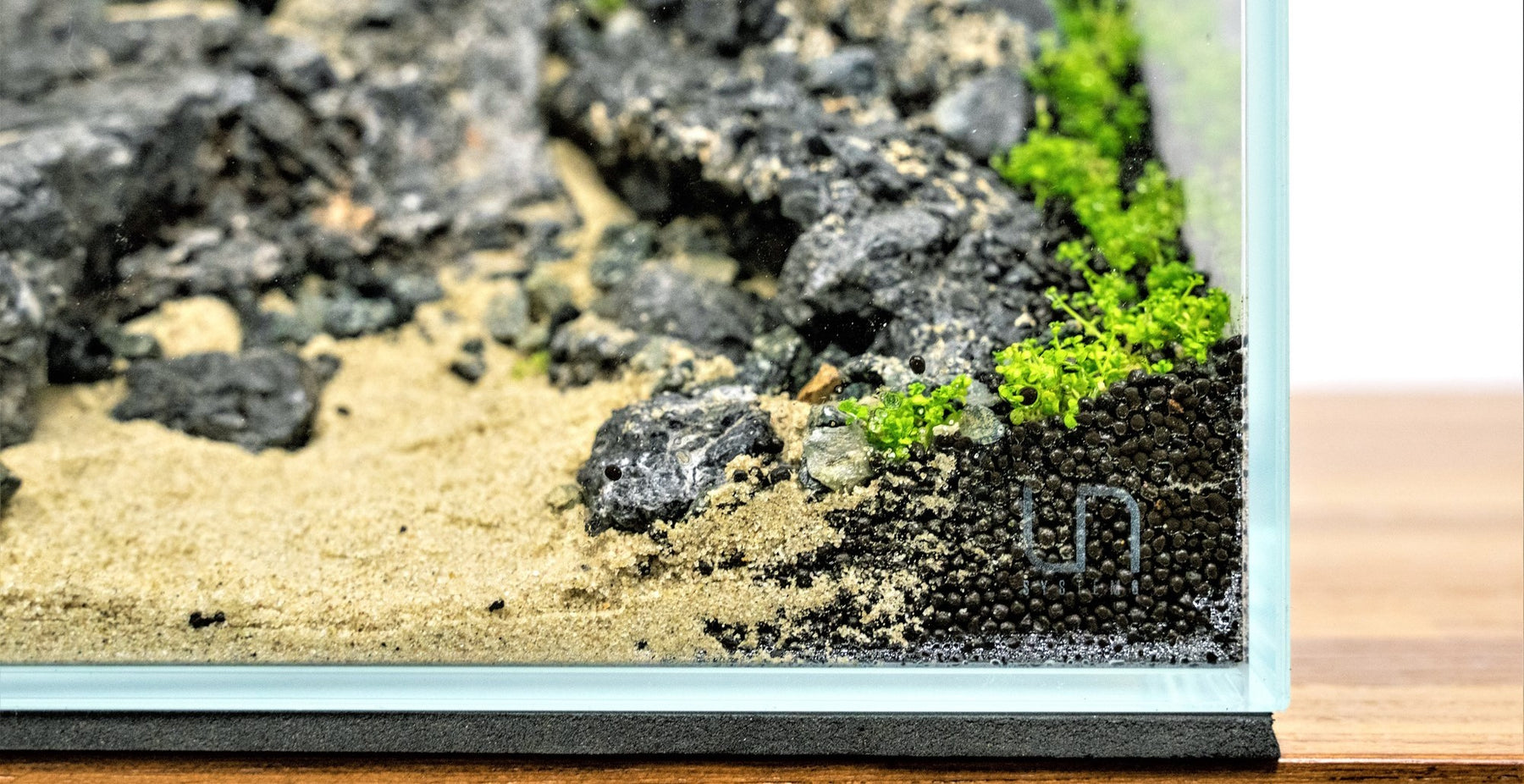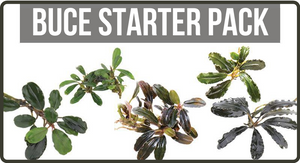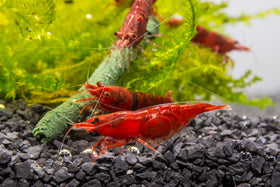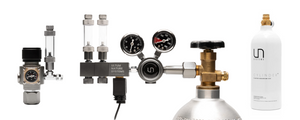
5 Tips on Substrate for a Planted Tank
Written By: Chris (@shrimpery)
If you're like most aquarium hobbyists, you probably grew up with a childhood aquarium that had a standard river gravel substrate. I personally never really thought about other types of substrate in the aquarium until I got into the planted side of things when I first learned about aquasoils and aquarium sand. Since then, I’ve made many mistakes in terms of aquarium substrate selection and layout.
Here are some tips that will help you avoid making the same mistakes in your own tank:

1. Choose the Right Aquasoil for Your Plants
You might see some more exotic substrates tossed around (kitty litter, anyone?), but aqua soil, gravel, and sand are really the mainstays of the aquascaping hobby, and those are the three that I’ll discuss here. It stands to reason that aquarium plants would appreciate nutrient-rich aquarium soil just as much as their terrestrial counterparts.
Why not just use potting soil? Early hobbyists learned the hard way that the soil used for houseplants tends to break down, leaching excess nutrients into the water, causing discoloration at best and algae blooms at worst.
An alternative substrate, hardened clay- similar to kitty litter or the clay you might use on a baseball field- was also explored. Although it didn’t break apart as easily and didn’t cause algae blooms, it lacked much of the nutrient content of potting soil and tended to clump tightly together with time, leading to root death and poor plant growth and health.
That brings us to aquasoil- a happy marriage of the two early substrates described above. Nutrient-rich plant substrate is baked into a hardened clay-like form that won’t clump together as easily as clay, nor will it leach as many nutrients into the water column.
There are many brands of aquasoil, but I personally feel the best substrate for a planted tank is the UNS Controsoil because it provides nutrients without introducing excessive nitrogenous waste into the water column. With any aquasoil, frequent water changes are key early on in the life of the scape to avoid overwhelming the water column with nutrients beyond what the fledgling plants can use to grow and prevent algae growth.

2. Keep it Professional Looking
One big mistake I made early on is using too thick of an aquasoil layer, especially near the front of the tank. A very thick layer adjacent to the front glass can look amateurish.
Most professional-looking tanks use a thinner layer of substrate at the front of the tank, becoming thicker as it slopes towards the back. Setting up the substrate this way contributes to a more harmonious sense of scale and proportion, and it prevents the formation of anoxic areas adjacent to the front glass (breeding ground for cyanobacteria).

3. Use Multiple Substrates
Speaking of the area at the front of the tank- why not just stop the aquasoil a few inches from the glass and use sand instead? Cosmetic sand adds a nice dash of brightness to the otherwise green and brown environment and helps to cordon off a section of the tank for aquarium fish and shrimp that won’t become overgrown. The light color provides a great contrast to the colors of the fauna and the aquatic plants.
I love to use a thin layer of sand at the front of a scape, trying to achieve as shallow of a layer as reasonably possible against the front of the glass (again increasing in depth as it extends towards the back).

4. Opt for Natural Sand
Not all sand is created equally: the biggest mistake I see people making is choosing whitish, fine sand, the type you might find in a pool filter or an indoor sandbox. The problem with using fine-grained sand is that it tends to have fewer spaces in between granules, contributing to an extremely dense substrate prone to clumping and the formation of anoxic areas- bad for plant root systems, and great for cyanobacteria.
It’s much better to use larger-grained natural sand that will have plenty of places for roots to grow and for debris to settle, resulting in a more forgiving, less dirty appearance. Bright white sand, which runs the risk of looking tacky at baseline, is also great at showing off any little imperfection in the planted aquarium substrate, from individual pieces of fish waste to tiny bits of live plants or algae. Using a more natural color is a better choice.

5. Don't Forget to Add Details
Finally, don’t overlook old-school aquarium gravel as a great accent piece for the front of the tank. You may also consider crushed lava gravel depending on your aquascaping style. It can be used in a similar way as cosmetic sand at the front of a fish tank and can even be used as the primary substrate with root tabs (very old school and not entirely recommended, but not without its charms).
There are even new gravels out there that have more of a tan color that can be blended with sand for a smooth transition point. To me, at this point gravel is so retro and rarely used in aquascapes that it feels like a fresh detail.

Substrate is such a basic component of a planted tank that it can get glossed over when discussing all of the nuances of aquascaping. Still, I hope that the above points help you see that there is more to it than meets the eye.
If you take just one point away from this post, I hope it’s this: don’t make it too thick against the front of the glass! Careful selection and implementation of your substrate into a scape makes the difference in whether it succeeds or fails visually.
Tell us - Was this article helpful? Please leave a comment below!
If you have any questions regarding this article, please DM us on Instagram, Facebook, or email support@buceplant.com so we can assist you - @buceplant





Comments
Leave a comment